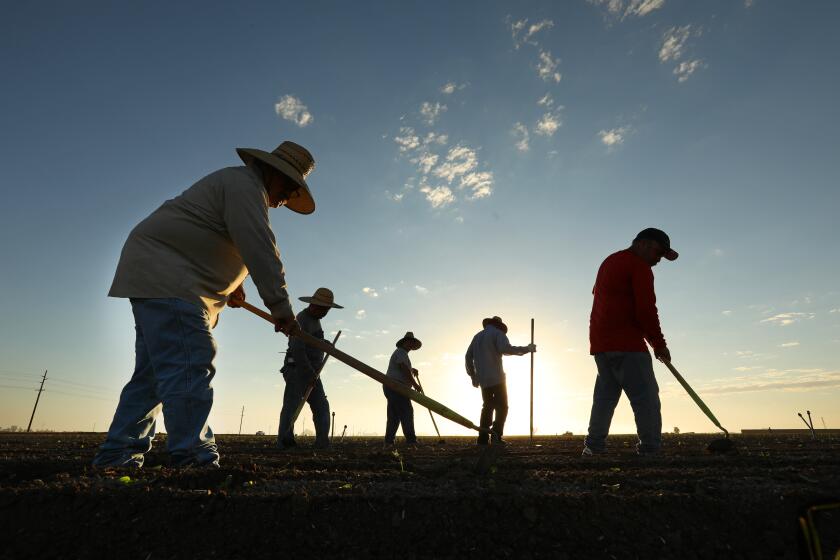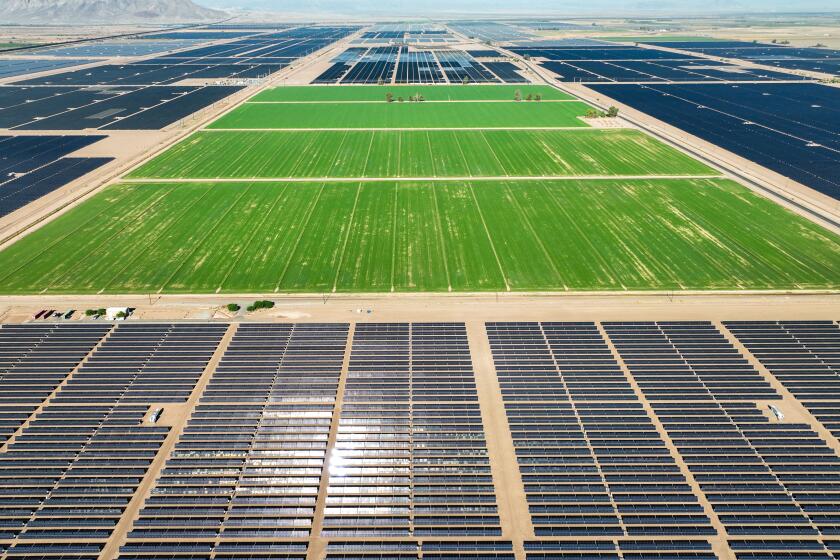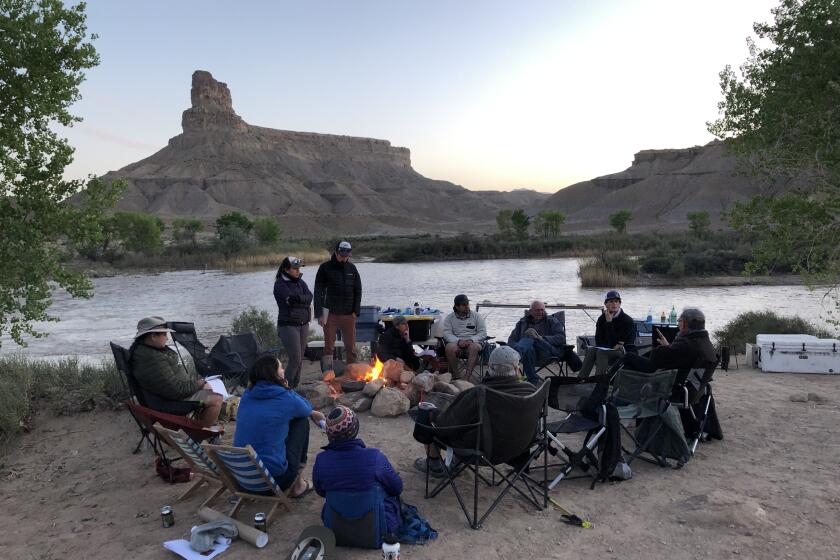As Colorado River shrinks, California farmers urge ‘one-dam solution’
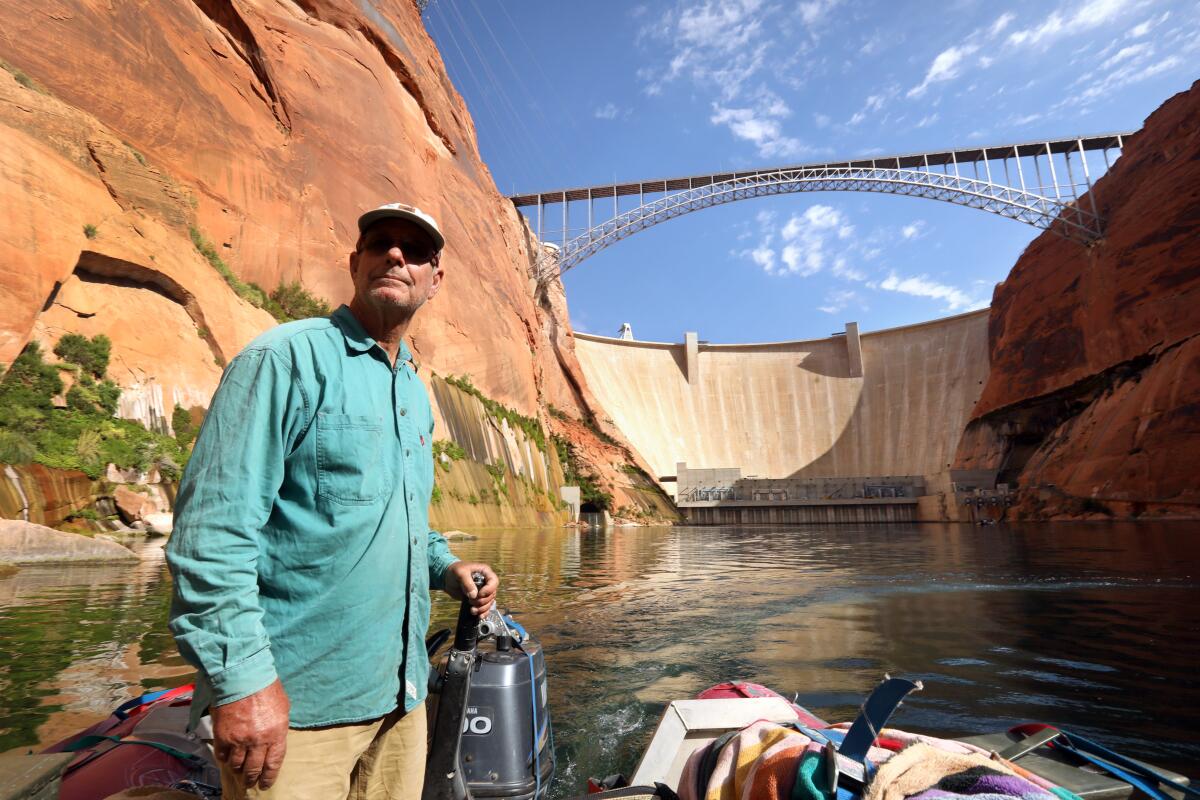
- Share via
For years, environmentalists have argued that the Colorado River should be allowed to flow freely across the Utah-Arizona border, saying that letting water pass around Glen Canyon Dam — and draining the giant Lake Powell reservoir — would improve the shrinking river’s health.
Now, as climate change increases the strains on the river, this controversial proposal is receiving support from some surprising new allies: influential farmers in California’s Imperial Valley.
In a letter to the federal Bureau of Reclamation, growers Mike and James Abatti, who run some of the biggest farming operations in the Imperial Valley, urged the government to consider sacrificing the Colorado’s second-largest reservoir and storing the water farther downstream in Lake Mead — the river’s largest reservoir.
“Past proposals by environmental groups to decommission Glen Canyon Dam or to operate the reservoir without power production as a primary goal can no longer be ignored and must be seriously considered,” they wrote.
Fresh calls to drain Lake Powell, sometimes referred to as the “One-Dam Solution” or “Fill Mead First,” have emerged as federal dam managers begin to consider new rules for dealing with water shortages after 2026 — a process that has sparked tensions between states and water agencies over where the brunt of reductions should fall.
“I think they see the writing on the wall. Farmers understand the future probably better than many others right now, all across the West. And they know that issues of scarcity are only going to become more incendiary,” said Kyle Roerink, executive director of the Great Basin Water Network, one of the environmental groups calling for the draining of Lake Powell.
“I think they know that we’re not going to have the water to fill two giant storage pools anymore,” Roerink said.
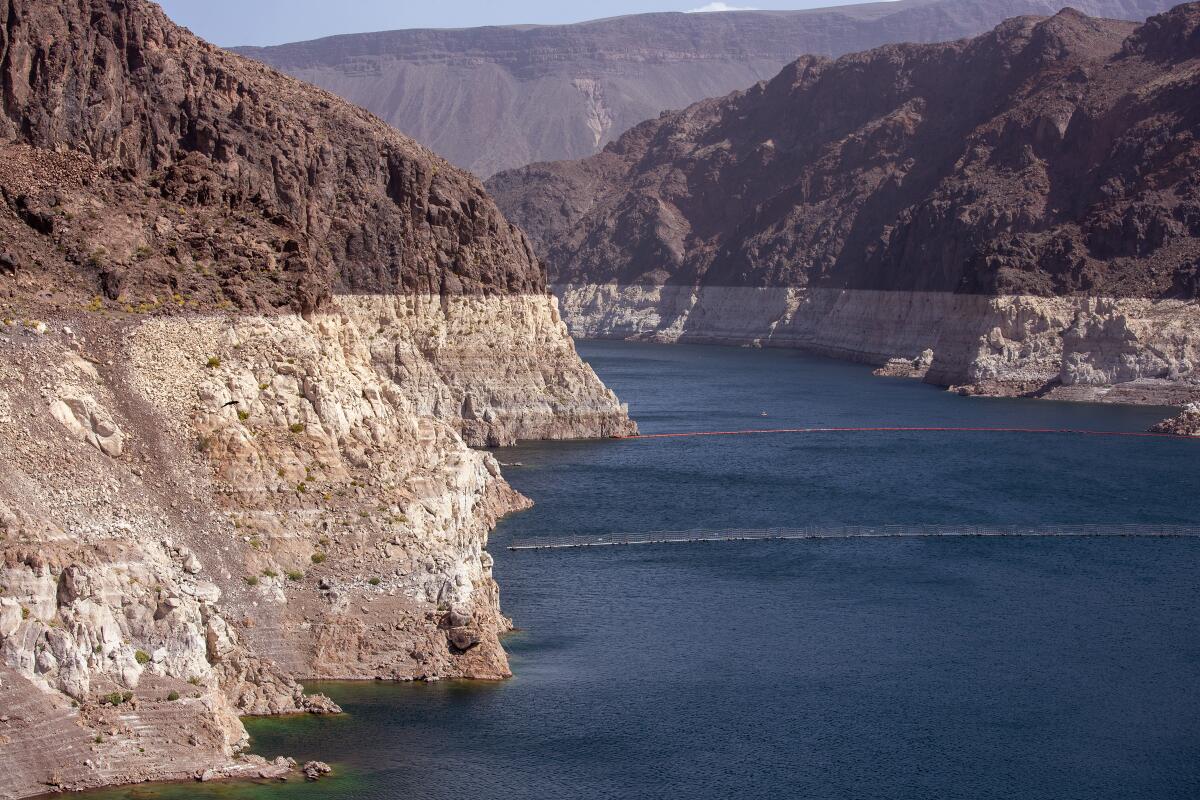
The concern is that if federal officials continue focusing on propping up reservoir levels at Lake Powell to produce hydropower, reduced releases from the dam could mean less water for Imperial Valley growers, Roerink said. Having water stored farther downstream would be like an insurance policy for drier times, he said, making sure the area’s farms continue to have access to water even at low reservoir levels.
The Abatti brothers’ letter was one of many that federal officials received recently as part of their consideration of new rules. In the letter, which the Abattis signed together with water resources engineer Craig Morgan, they pointed out that under the 1922 Colorado River Compact, the foundational agreement that divided the river, using water for hydropower has a lower priority than agricultural water use.
They also emphasized that the agreement requires the four states in the Upper Basin — Colorado, Wyoming, Utah and New Mexico — to deliver an annual average of 7.5 million acre-feet per year to the Lower Basin states of California, Arizona and Nevada (over any 10-year period).
“If they’re going to continue to meet their obligations downstream, it just doesn’t make sense to keep both reservoirs full,” Morgan said. “They need to be able to deliver the water to meet the commitments under the compact.”
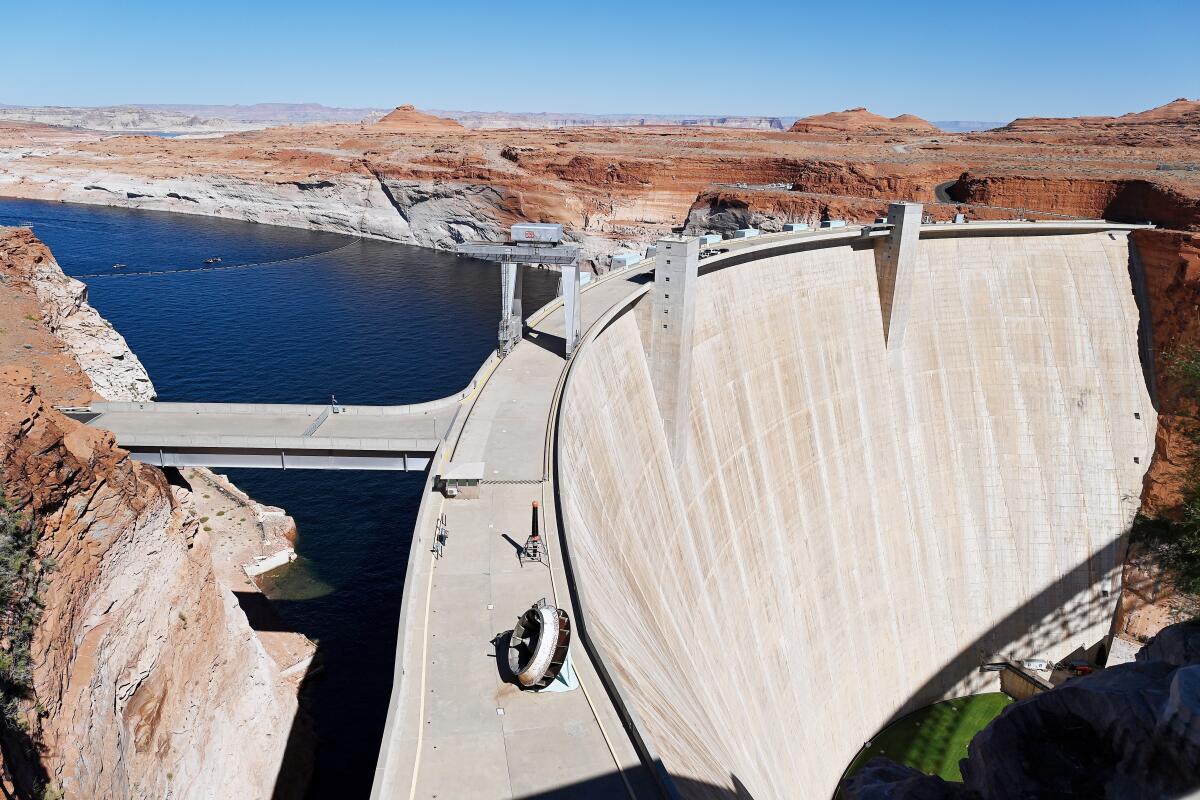
Morgan and the Abattis noted that a significant amount of water evaporates from Lake Powell, and that evaporation would be reduced by storing water in a single reservoir. They urged the federal government to consider retrofitting the dam to ensure enough water can pass downstream.
California uses more Colorado River water than any other state. And in the Imperial Valley, the Imperial Irrigation District delivers the single largest share of the river’s water to farmlands that produce crops including hay and vegetables.
Years of heavy water use, drought and the effects of climate change have left the Colorado River’s largest reservoirs at low levels, and scientists have projected that the river’s average flows will decrease further as temperatures continue to rise.
Lake Powell now sits at 38% capacity, while Lake Mead is 34% full.
As the federal government pushes states to reduce usage of dwindling Colorado River water, Imperial Valley farmers fear a “worst-case” scenario.
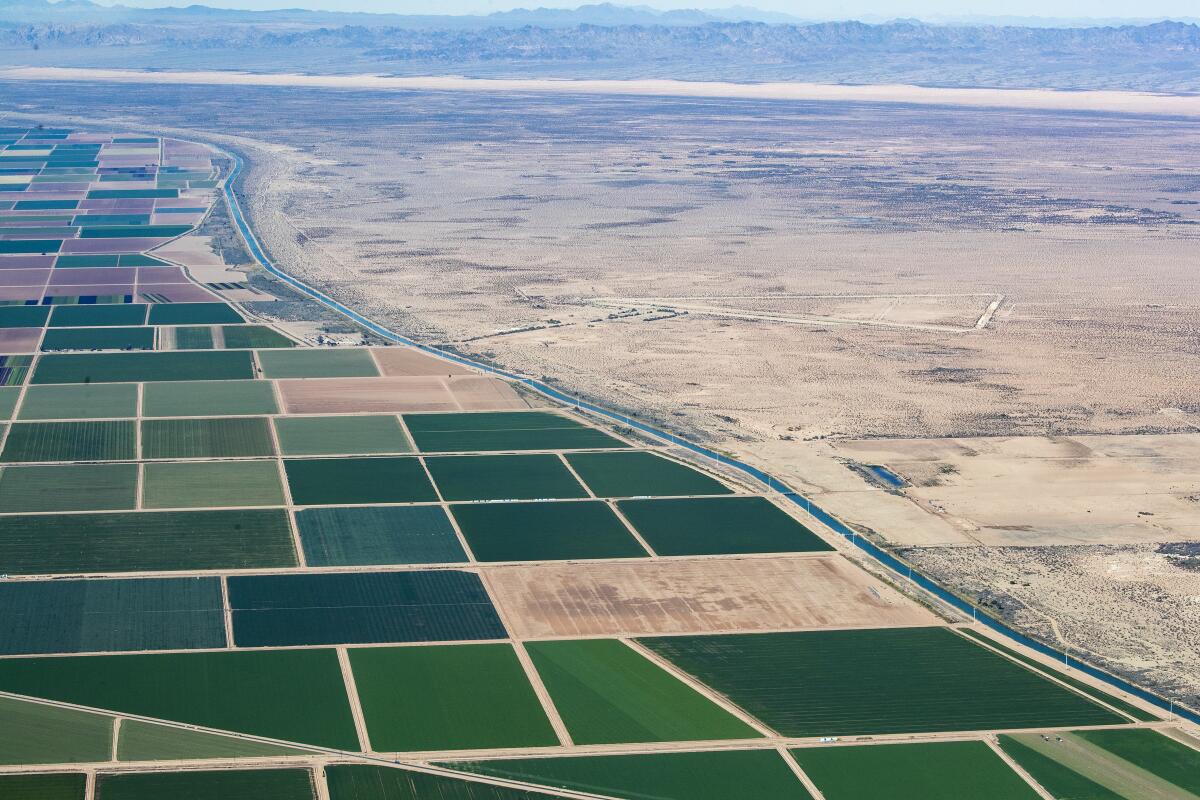
A coalition of environmental groups — including Living Rivers, Center for Biological Diversity and Glen Canyon Institute — have called for the federal government to analyze the “One-Dam Solution” and re-engineer Glen Canyon Dam to drain the reservoir and return it to a flowing river.
In a letter, the groups said the Southwest’s drying climate and the river’s declining flows require a plan for “the climate-inevitable obsolescence and decommissioning of Glen Canyon Dam.” They focused on concerns that at low reservoir levels, the dam’s design would effectively create a bottleneck, hindering the movement of water downstream.
“The dam wasn’t designed to operate at low levels, and every climate study in recent years suggests low levels will be the norm,” said Eric Balken, executive director of the Glen Canyon Institute.
“Re-engineering the dam to release more water at low levels is a matter of water security,” Balken said. “This is why, for the first time publicly, Imperial farmers and Lower Basin states are asking the feds to study the idea: They see the risk that Glen Canyon Dam poses to downstream users.”
Federal officials have recently begun studying options for overhauling the dam. Dam managers have cited concerns that if Lake Powell were to fall below the power-generating threshold, water would only flow through four 8-foot-wide bypass tubes, creating a choke point with reduced water-releasing capacity — potentially shrinking the flow of water through the Grand Canyon and reducing water deliveries to Lake Mead, which stores water for California, Arizona, Nevada and Mexico.
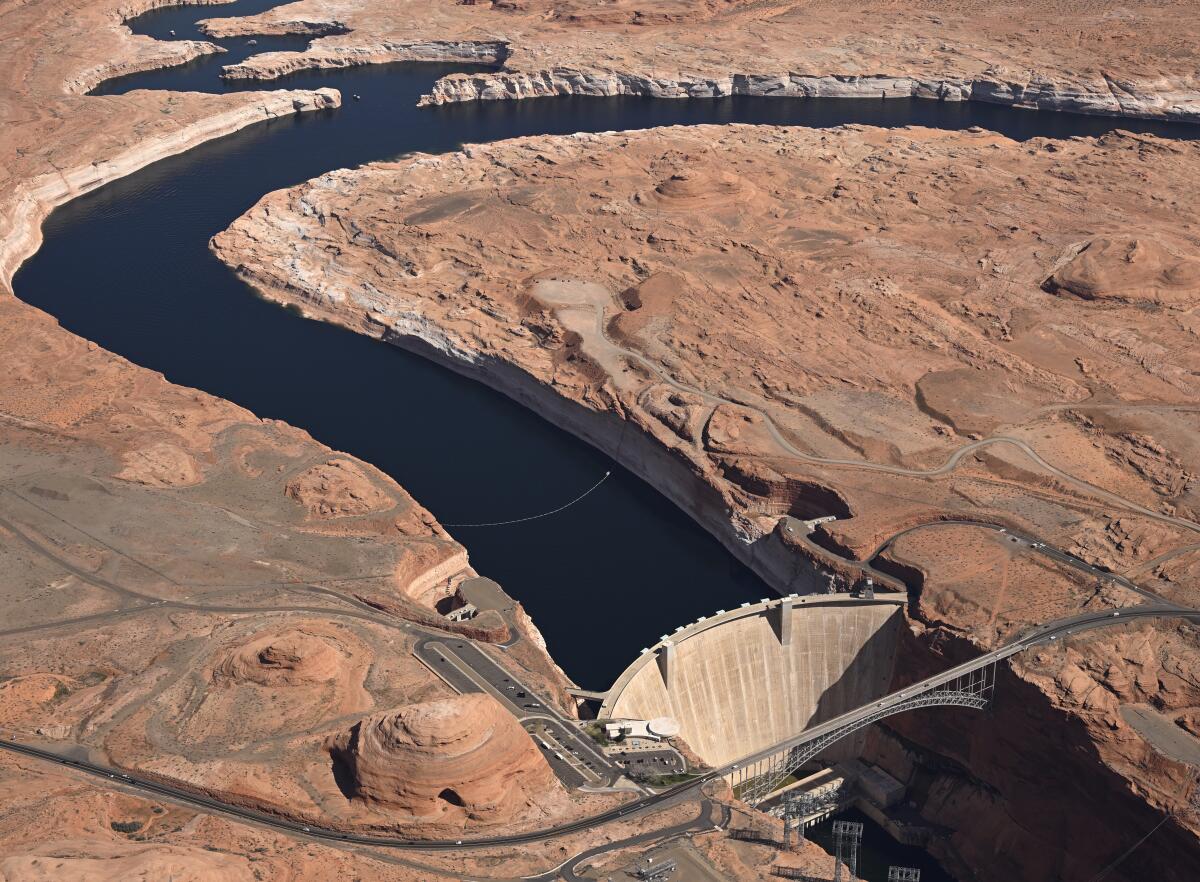
During a meeting this year, federal officials discussed proposals such as penetrating through the dam’s concrete to make new lower-level intakes, or tunneling a shaft around either side of the dam, among other options.
Balken’s group has said that the dam’s “antiquated plumbing system” represents a major liability, and that allowing water to bypass the dam would solve the problem, while also restoring a natural stretch of river and helping the ecosystem in the Grand Canyon.
Officials representing California, Arizona and Nevada said in a joint letter that the Bureau of Reclamation should “evaluate potential improvements at Glen Canyon Dam that could … ensure that water can safely pass through the dam at low elevations.”
Representatives of some states have indicated they want to see water continue to be stored in Lake Powell. Gene Shawcroft of Utah expressed concerns in his letter to the government that the reliance of California, Arizona and Nevada on water withdrawals from Lake Mead “has resulted in larger than average releases from Glen Canyon Dam and drawn down Lake Powell levels.”
Replacing agriculture with solar panels could help solve the West’s energy and water crises. But farmers are fighting back.
Representatives of the four Upper Basin states called for permanent reductions in water use in California, Arizona and Nevada of 1.2 million acre-feet to 1.5 million acre-feet, or about 17% to 22%. They suggested one way of achieving reductions would be to begin counting water that is lost to evaporation from reservoirs and along the river’s lower stretches.
That proposal, which would hit California especially hard, has been opposed by the state’s water managers and also by farmers in the Imperial Valley, who benefit from senior water rights dating from 1901.
The Abatti family has been farming in the Imperial Valley for more than a century. It manages large operations on thousands of acres, growing crops that include alfalfa, broccoli and melons. Family members said in their letter that the federal review of options for the rules “should be devoid of politicization” and must respect the Imperial Valley’s senior water rights. In recent years, the Abattis have been involved in legal disputes with the Imperial Irrigation District over water rights.
The Imperial Irrigation District’s officials didn’t mention the idea of draining Lake Powell in their comments to the government. Instead, they called for reevaluating the thresholds that trigger cuts in deliveries during shortages, an idea that California, Arizona and Nevada also raised.
Tina Shields, the district’s water manager, suggested “smaller, more frequent water use reductions as opposed to larger, less frequent reductions.” She said such cuts “in parity with reduced releases from Lake Powell” would be more likely to prevent reservoirs from reaching critically low levels.
The Colorado River is at a breaking point. We traveled across the watershed to examine what the crisis means for the Southwest.
The 30 tribes in the Colorado River Basin have also been weighing in on proposals for changing how the river is managed, and have been demanding they be included in negotiations among the states. Jordan Joaquin, president of the Fort Yuma Quechan Indian Tribe, said in his letter to the government that the current approach, which focuses on coordinating water allocations between Lake Mead and Lake Powell, has “already proven insufficient to avoid seemingly constant crisis management.”
He called for a new framework in which decisions are based on “whole system conditions” across the entire watershed, rather than triggers for cutbacks based solely on the levels of Lake Mead and Lake Powell.
The Colorado River’s flow has declined dramatically since 2000, and research has shown that global warming driven by the burning of fossil fuels has worsened the long stretch of extremely dry years.
Scientists have recently estimated that stabilizing reservoir levels would require 13% to 20% reductions in water use across the Colorado River Basin, but that in the long term it’s likely the reservoirs will rarely be higher than half-full.
In a study published in June, researchers led by professor Jack Schmidt of Utah State University said one option would be to drill tunnels around Glen Canyon Dam and equip them with emergency valves, which could be closed “in the unlikely event that large runoff filled Lake Mead and storage in Lake Powell was needed.”
One issue that complicates the debate is the fact that Utah has proposed to build a pipeline to take water from Lake Powell to support growth, a plan that has been opposed by environmental groups and other states.
Rhett Larson, a professor of water law at Arizona State University, said he thinks the idea of draining Lake Powell will run into strong opposition from the Upper Basin states, but that it still ought to be studied as part of the federal review.
“It’s probably too provocative to suggest eliminating Lake Powell,” Larson said. “So let’s see if we can find something in between.”
